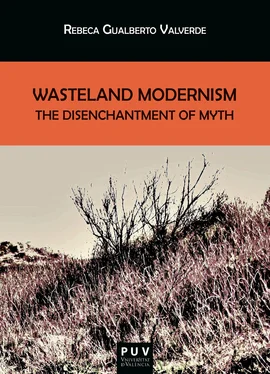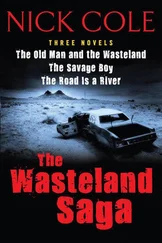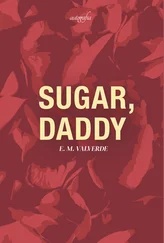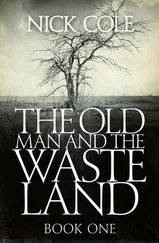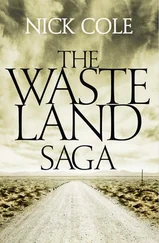One last reason this study is theoretically anchored, from a myth-critical perspective, on the myth and ritual school of thought is that this perspective emphasizes the social function of mythology. From the writings of Frazer and Weston transpires the notion that the transcendence of myth resides in its capacity to warrant the community’s survival. This is especially visible in the myth of the Waste Land, which explicitly articulates a need for communal regeneration and political restoration that is, however, undone in the modernist revision of the myth. Understanding the ideological substratum enforced by the meaning of communitarian restoration is thus crucial for a myth-critical analysis of the literature of the period that also coincides with myth-ritualism in placing the mytheme of the Waste Land in the center of the story and assigning to it the core meaning of the tale. From the critical prism of myth-ritualism, the point is neither the magic of the Grail nor how it serves the Fisher King; the point is the inextricable connection between the King and the Waste Land and how the story must unfold so that the land is restored to prosperity. And this perspective elucidates the relevance of the myth in American modernism, given the historical context, which in turn permits a deeper understanding of the ideological function of myth itself.
The modernist representation of the Waste Land myth in the American canon, as will be explored throughout this book, repeatedly emphasizes the Waste Land’s plight over other narrative components of the tale. The effect is the highlighting of a set of political and ideological concerns that connect the social need for a political order to the life forces of nature and cosmology, for the welfare of the land is presented as resulting from the welfare (and rightfulness) of its rulers. Such presupposed correspondence between the natural and the social spheres of human existence entails a legitimizing force of specific power structures, which can then be challenged if the story is rewritten. This study aims to understand how the story is rewritten in a context of collective trauma to reveal how the dominant political and ideological structures of the pre-war status quo are dismantled in modernist literature. It does not consider that myth-ritualism offers a truer or more correct interpretation of mythopoetic thought than other myth-critical schools. As argued, the use of myth-ritualism as a critical framework obeys its decisive influence in the literary representation of the Waste Land myth at the beginning of the twentieth century. This theoretical framework will serve as the backbone for a close reading of the selected corpus to advance a critical hypothesis about the modernist revision of myth. This hypothesis will address the immanence of mythical meanings in literature and the particularities of American modernism in using and reusing myth to articulate a communal narrative of social and historical collapse.
WASTELAND MODERNISM
In his 1962 essay “Where Do We Go from Here? The Future of Fiction,” Saul Bellow describes the literature of modernism as “a dark literature, a literature of victimization, of old people sitting in ash cans waiting for the breath of life to depart” (Taylor “Where?”). A year later, in the lecture Recent American Fiction , he denounces that modern literature “would rather have the maddest chaos it can invoke than a conception of life it has found false” (10). He follows with the question: “But after this destruction, what?” (10). He masterfully answered his own question a year later in the novel Herzog , an experimental, meditative text built upon the ruminations of its protagonist, who seeks to overcome “our contemporary spiritual malady” (Chavkin 326). The novel expresses the author’s “rejection of pessimistic wasteland modernism” (326)—a claim that eloquently introduces a critical subcategory of American modernist literature: wasteland modernism. The term, which critic Allan Chavkin extends to repeatedly refer to the “wastelanders” (327)—meaning American modernist authors—derives directly from Bellow’s novel. Here the protagonist complains that very quickly, “the visions of genius become the canned goods of the intellectuals” (74), citing as an example “the commonplaces of the Wasteland outlook” (75). This is regarded as an instance of “weakness” and “cowardice” when addressing a subject as great as “the whole life of mankind” (75), which has, however, become an “unchallenged literary convention” (Chavkin 329) in modern fiction.
The motif of the Waste Land is indeed hugely pervasive in the literature of American modernism. But the present study borrows the term of Herzog’s complaint about ‘wasteland modernism’ to modestly offer an alternative, less disdainful view of this wasteland outlook. For Herzog, wasteland literature is a cliché, canned goods, “a merely aesthetic critique of modernist history” (75). From the perspective of this study, however, the dark literature of modernism deserves renewed critical attention that tackles the process of representation and revision of a myth so emblematic that resulted in the coinage of critical labels such wasteland modernism (Chavkin 326), wasteland writers (French 170), or wastelandism (Kermode 113). Modernist myth-making is not a mask that allows individuals to hide from reality (Chavnik 335). It is a lens to singularly apprehend reality, construct it, and deconstruct it so that, after catastrophe and destruction, new meanings are conceived.
In this regard, and as it partakes post-war modernism, Matthews’ argument about how “American writing of the war was the war” (217) is particularly eloquent. This was a circumstance determined by the distance that separated US soil from the battlefields in Europe and because American troops did not fully participate in military actions until the last year of the conflict (217). Consequently, for a long time, the First World War was an imagined war, a war that “relied on institutions of representation – journalism, print propaganda, fiction, sermons – to make the war real in the place where it was not occurring” (217). On the one hand, this meant that the horror of modern technological warfare was terribly imagined: poison gas, massive shelling, trenches, airplanes used as weapons (217); on the other hand, the lack of first-hand experience of the war led authors such as Edith Warton, for example, to enlarge the war’s capacity for redemption (224). In this view, the war was conceived as a noble fight to preserve the achievements of western civilization against the threat of “materialism, vulgarity, class upheaval, [and] national and personal interest” (226). The reality crash of witnessing and experiencing the carnage, of course, diminished the graciousness of those ideals. Still, it did something worse: it revealed that it was those grand values and institutions that had actually led to the mutilation and killing of millions of human beings. As a result, as Matthews writes, “a generation of writers returned from the war to report that their elders had been mistaken, that the direct experience of war had shaken their confidence in Western faith in progress, reason, technology, and democratic capitalism, and that they would be seeking new artistic ways to express that negative sensibility” (229).
Paraphrasing Bellow, this is the conception of life that was found to be false. Perhaps more strikingly for American citizens who had so actively imagined the war from afar, it is undeniable that, as Hynes famously argued, the First World War was “the great imaginative event” of its time, changing the way men and women thought about the world (XI). It was the ending of something known and knowable (3), and it is such uncertainty that triggers the unmaking of myth explored in this book. The texts analyzed are six works firmly established in the canon of American wasteland modernism: T.S Eliot’s The Waste Land (1922), John Dos Passos’s Manhattan Transfer (1925), F. Scott Fitzgerald’s The Great Gatsby (1925), Ernest Hemingway’s The Sun Also Rises (1926), John Steinbeck’s To a God Unknown (1933) and Djuna Barnes’s Nightwood (1937). The particularities of the negative sensibility that connects them are a shared process of mythical revision, the commonplaces of the Wasteland outlook that articulate in specific but interconnected voices the collective despair that resulted from the horror of experience and representation of the war. The myth of the Waste Land, rewritten in these texts, is the emblem of a zeitgeist of chaos and violence that counterweighs the modernist paradigm’s fragmentation and uncertainty. A traditional story built around the themes of sickness, sterility, sacrificial death, and the hope of restoration for a land laid waste seems pertinent after western civilization had plunged into the abyss, but modernism demands rupture, disorder, reshaping. The Waste Land is one governing metaphor in the literature of the period, but the story is set out of order, the plot rearranged, the meaning reversed as degeneration imbues the new version of the tale.
Читать дальше
